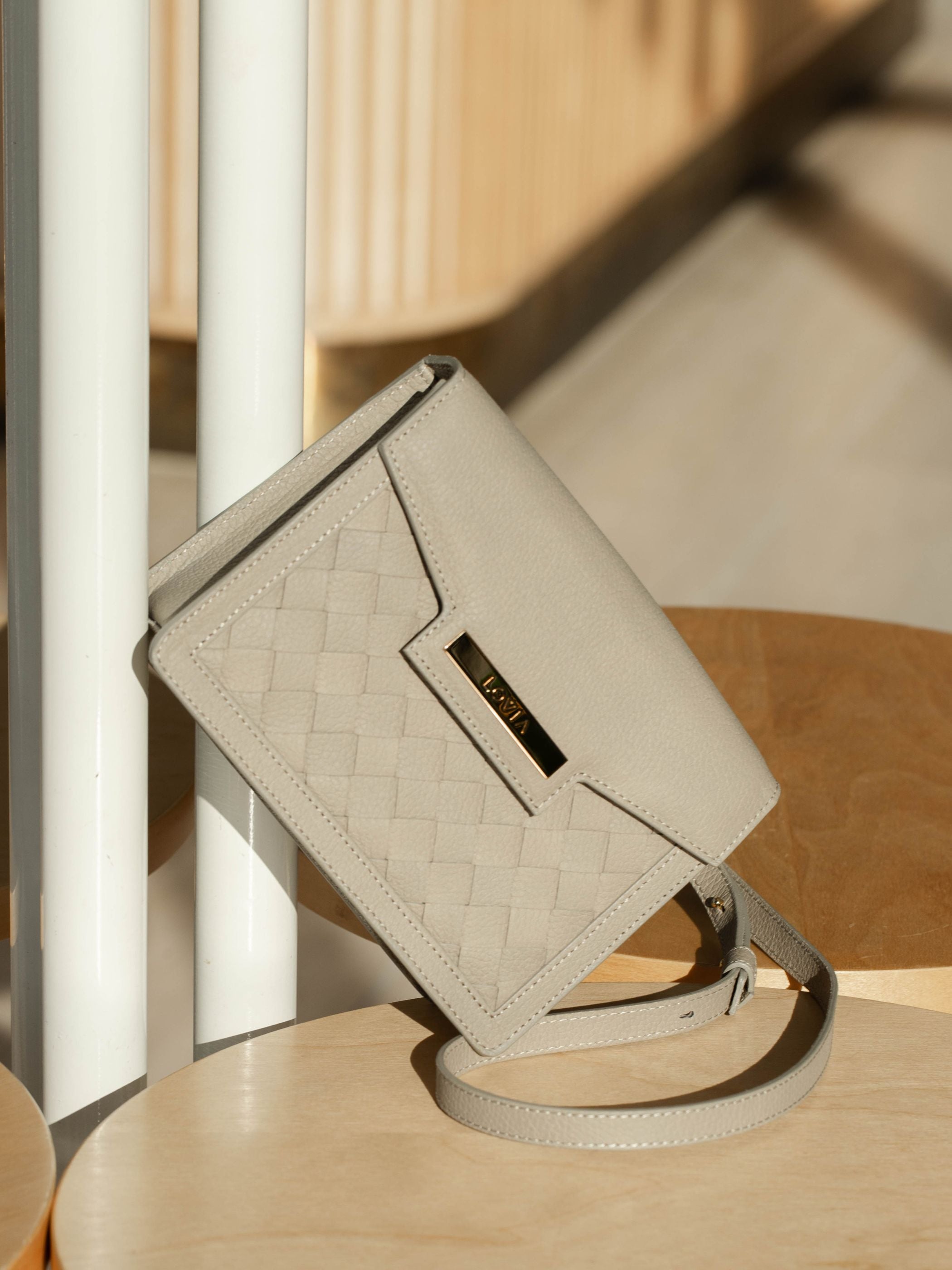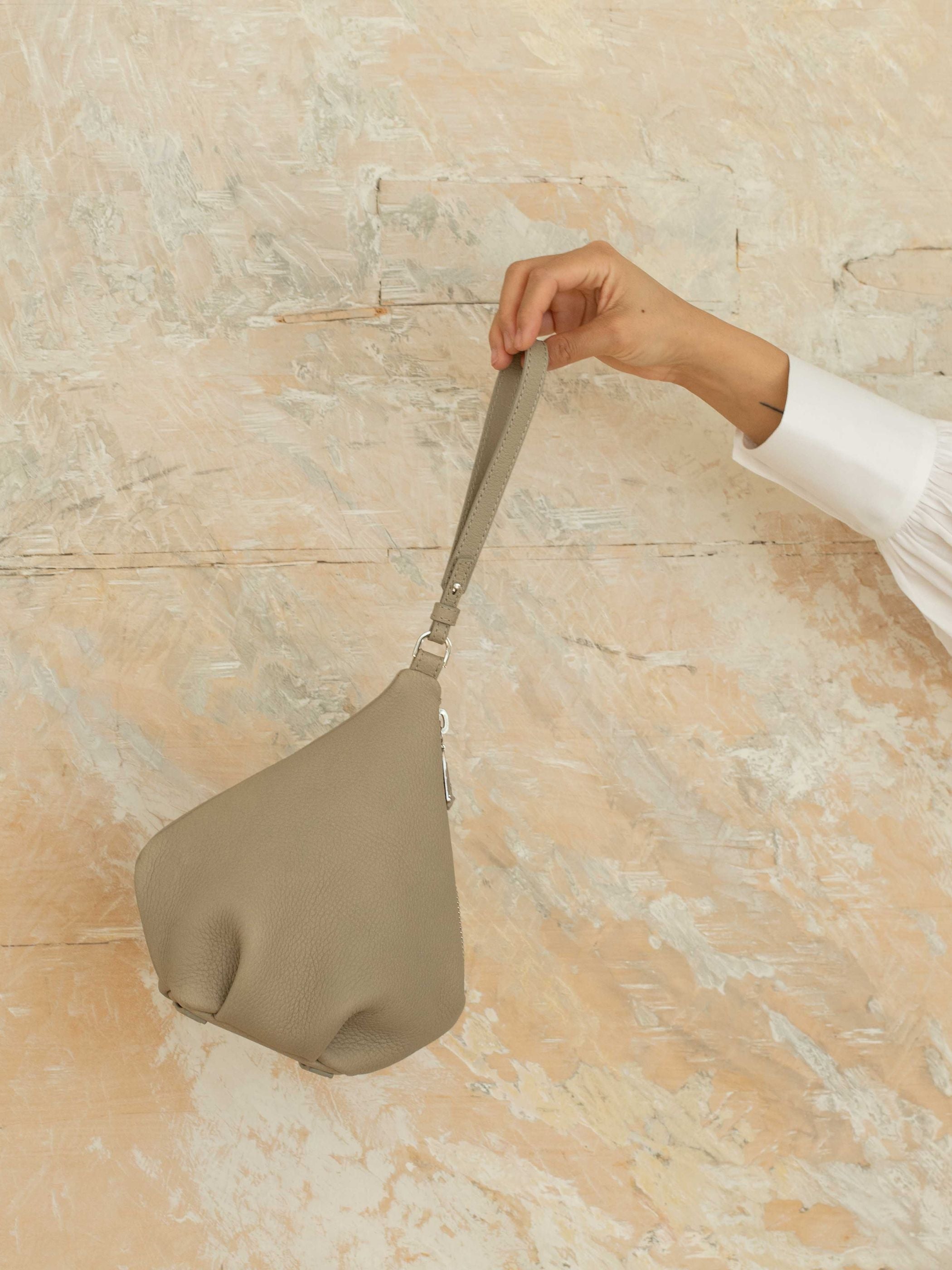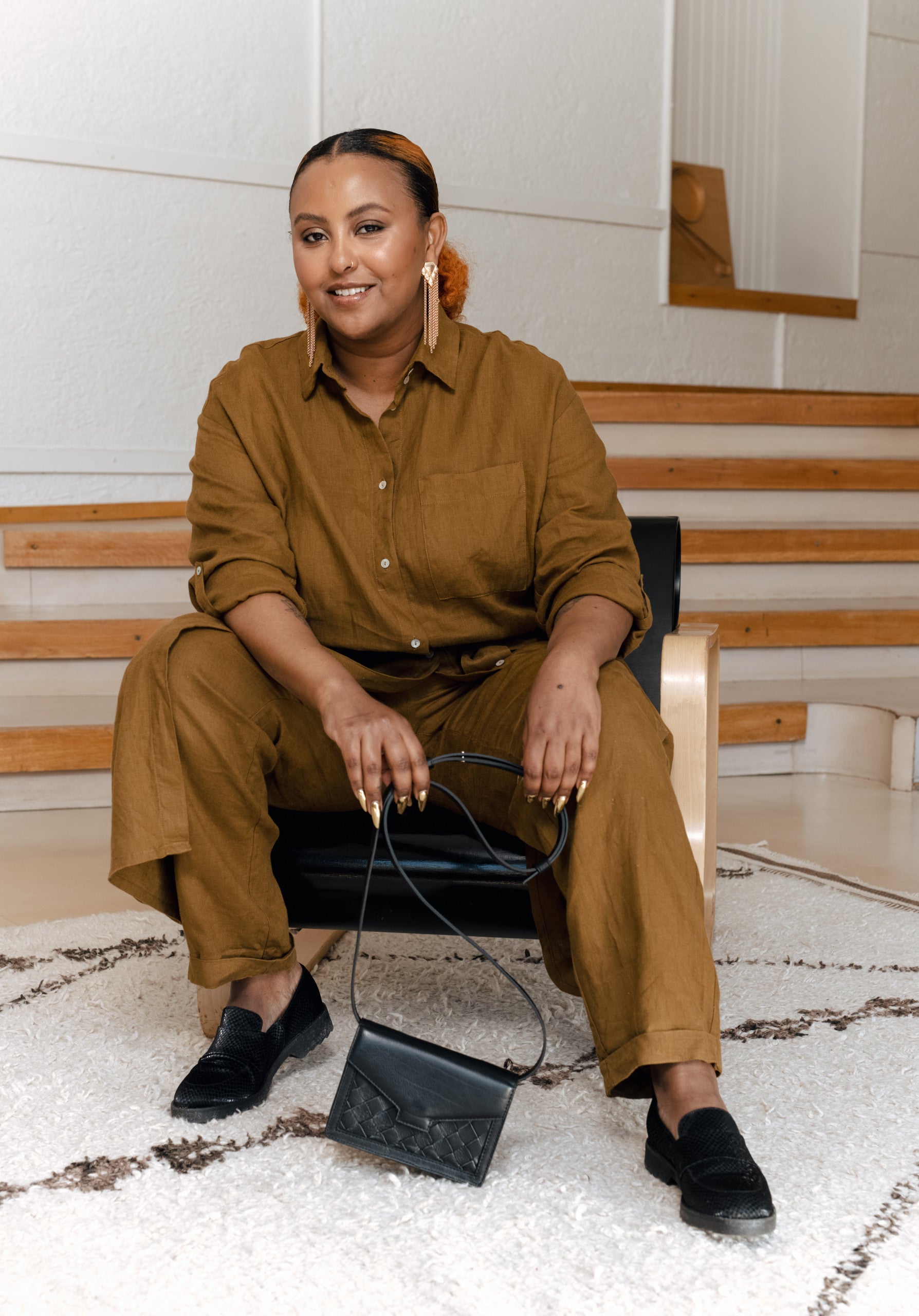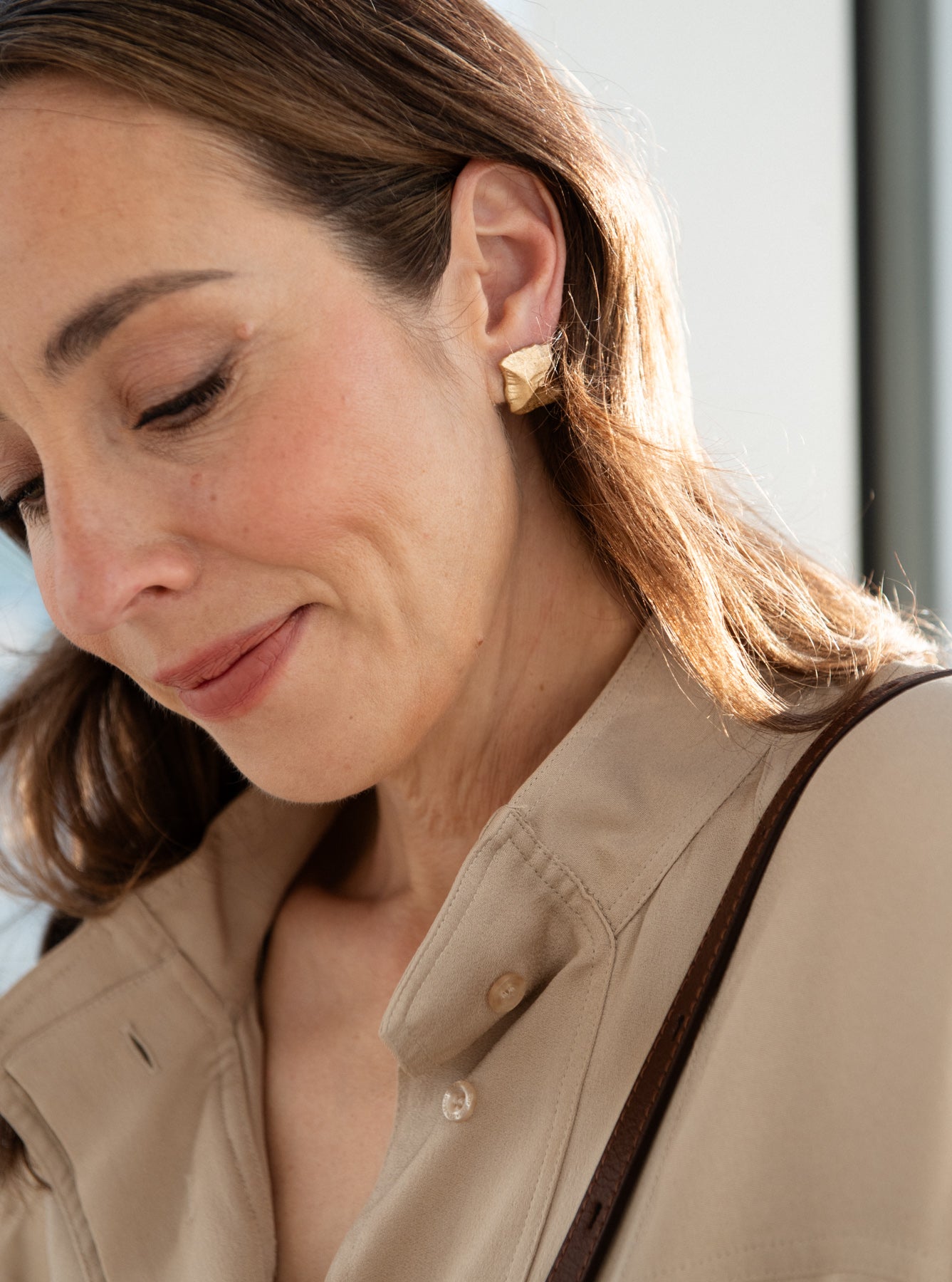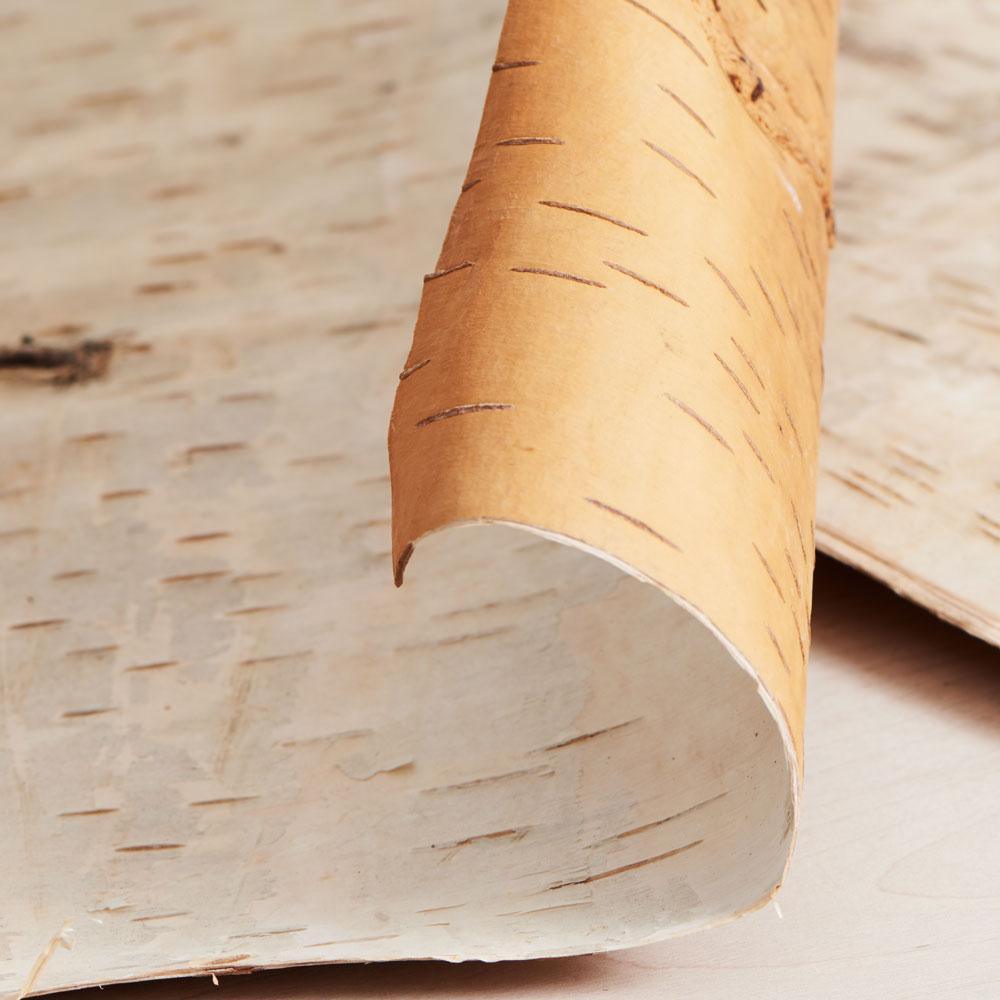Perch leather, Nordic Fish Leather
The new life of perch skin
Nordic Fish Leather
Perch leather

High-quality fish skin from Iceland
At the heart of the circular economy is the idea of using existing materials efficiently, rather than constantly creating new ones. This idea is also reflected in our collaboration with Nordic Fish Leather, where fish leather is given a new life.
Nordic Fish Leather is located in Sauðárkrókur, a small but vibrant community of 3,000 people in the Skagafjörður fjord in Iceland. Nordic Fish Leather’s business idea was born from the desire to bring ancient craftsmanship into the modern world and produce high-quality fish leather from surplus fish industry waste. Small insights can lead to big things - one person’s trash is another’s treasure.
FOUNDED: 2020
LOCATION: SAUÐÁRKRÓKI, ICELAND
From trash to bag material
Iceland is a fishing nation surrounded by the sea, which has used fish skin for centuries, for example as a material for shoes to warm up from the cold winters. Small amounts of fish skin surplus are used, for example as animal feed, but most of it ends up wasted, even though fish skin is sustainable and of high quality. We want to make a change in this, because when new natural resources are needed less, the burden on nature is also reduced.
Perch leather is thin, soft and very strong. At Lovia, we have used perch leather in small bags as well as in details of larger bags, such as front panels or handles.
But where does the perch leather originally come from for our use? The perch leather used by Nordic Fish Leather is sourced from an Icelandic man who wanted to bring more employment to a small African village. Nordic Fish Leather’s skilled artisans taught the villagers how to tan perch leather and make it into a sustainable product for further use. The project has now ended, and we at Lovia are currently not using Nordic Fish Leather’s perch leather in our bags. Instead, we continue to use salmon skin from them, which is a surplus of food production.


Where could we do better?
Greetings from the Saudarkrok factory
"At the beginning of 2020, we decided to close all our other operations and focus fully on developing and improving fish skin tanning and finishing techniques. Our main goal is to produce high-quality fish skin as sustainably as possible. We only purchase raw materials from certified partners who are committed to responsibility and we also only use green energy in our entire production. All the electricity we use is hydroelectric and the hot water comes from a local hot spring.
"Salmon skin has long been an undervalued material that has ended up in the trash. However, we have found a solution to produce high-quality leather from surplus material for many different uses."
-Hlynur Ársælsson, Nordic Fish Leather
The stories told on this page sound great and we are proud of them, but what next? Reducing the environmental impact of our products requires continuous development, so there is still room for improvement.
Farming salmon for food production is not entirely ethically unproblematic. However, as long as farming continues, salmon skin will be produced as surplus and most of it will end up wasted. At the moment, it makes sense to put the surplus to good use, as salmon skin is an underutilized material, while exploring better options for the future.

Nordic Fish Leather
Perch leather

High-quality fish skin from Iceland
At the heart of the circular economy is the idea of using existing materials efficiently, rather than constantly creating new ones. This idea is also reflected in our collaboration with Nordic Fish Leather, where fish leather is given a new life.
Nordic Fish Leather is located in Sauðárkrókur, a small but vibrant community of 3,000 people in the Skagafjörður fjord in Iceland. Nordic Fish Leather’s business idea was born from the desire to bring ancient craftsmanship into the modern world and produce high-quality fish leather from surplus fish industry waste. Small insights can lead to big things - one person’s trash is another’s treasure.
FOUNDED: 2020
LOCATION: SAUÐÁRKRÓKI, ICELAND

From trash to bag material
Iceland is a fishing nation surrounded by the sea, which has used fish skin for centuries, for example as a material for shoes to warm up from the cold winters. Small amounts of fish skin surplus are used, for example as animal feed, but most of it ends up wasted, even though fish skin is sustainable and of high quality. We want to make a change in this, because when new natural resources are needed less, the burden on nature is also reduced.
Perch leather is thin, soft and very strong. At Lovia, we have used perch leather in small bags as well as in details of larger bags, such as front panels or handles.
But where does the perch leather originally come from for our use? The perch leather used by Nordic Fish Leather is sourced from an Icelandic man who wanted to bring more employment to a small African village. Nordic Fish Leather’s skilled artisans taught the villagers how to tan perch leather and make it into a sustainable product for further use. The project has now ended, and we at Lovia are currently not using Nordic Fish Leather’s perch leather in our bags. Instead, we continue to use salmon skin from them, which is a surplus of food production.
Greetings from the Saudarkrok factory
We want to give our partners a voice, because without them the idea of utilizing waste material would just remain, well, an idea. Here are some greetings from Nordic Fish Leather and snippets of the team's everyday life, as it happens at the factory in Sauðárkrókur.
"At the beginning of 2020, we decided to close all our other operations and focus fully on developing and improving fish skin tanning and finishing techniques. Our main goal is to produce high-quality fish skin as sustainably as possible. We only purchase raw materials from certified partners who are committed to responsibility and we also use only green energy in our entire production. All the electricity we use is hydroelectric and the hot water comes from a local hot spring.
"Salmon skin has long been an undervalued material that has ended up in the trash. However, we have found a solution to produce high-quality leather from surplus material for many different uses."
-Hlynur Ársælsson, Nordic Fish Leather

Where could we do better?
The stories told on this page sound great and we are proud of them, but what next? Reducing the environmental impact of our products requires continuous development, so there is still room for improvement.
Farming salmon for food production is not entirely ethically unproblematic. However, as long as farming continues, salmon skin will be produced as surplus and most of it will end up wasted. At the moment, it makes sense to put the surplus to good use, as salmon skin is an underutilized material, while exploring better options for the future.
Discover treasures made from salmon skin

wave small bag

onni clutch bag


